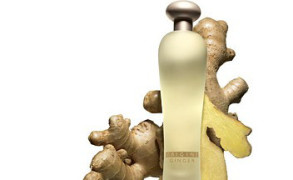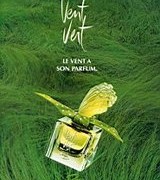Changing the dresses
Spring has vanished
Into a long coffer
—Ihara Saikaku

The image that this poem plays on is a wooden chest for storing clothes. The change of seasons in traditional Japan used to be associated with the heavier spring kimono being exchanged for the light summer one. As the cherry petals fall and vanish into the earth, so does spring itself. Summer is waiting in the wings.
Ihara Saikaku (1642 – 1693) was famous for his scenes of the “floating world” that he explored both in his poetry and prose. Grieving his wife’s death in 1662, he composed a thousand verse poem, which was so well-received that he continued writing. His most famous work The Life of an Amorous Man was published in 1682, securing his place as the foremost writer of the Edo period. His novel The Life of an Amorous Woman was made into one of my favorite Japanese films, The Life of Oharu by Kenji Mizoguchi. It’s the story of a woman who retains her spirit and struggles for her independence despite the harrowing circumstances into which she’s forced.
Saikaku’s poetry is often humorous, and he’s skilled at presenting small vignettes that some might call quotidian–cleaning a room, changing the seasonal wardrobe, preparing for a visit–but that capture the mood of the moment.
The English translation above is mine. For those who would like to get a taste of the original, I’m including the romanization as well as the Japanese text.
Nagamochi ni
Haru zo kureyuku
Koromogae
長持ちに
春ぞくれ 行く
衣更え
Photograph from Captain Frank Brinkley’s Japan: Described and Illustrated by the Japanese, 1897.
















16 Comments
Emilie: Ahh I really like these old pictures with bright colours added in over the sepia tones. I’m sure there is a word for this style but I have no idea what it is. I find it very romantic and nostalgic. The girl on the left looks so young and solemn!
It’s very sad but beautiful that he composed such a long poem while grieving for his wife. I imagine he must have had many emotions to pour out and what a lovely tribute. June 1, 2018 at 9:13am
Victoria: I also like these tinted photographs, and this book I mentioned has many fascinating ones. Their hairstyles are so elegant, even if simple.
Do you have a favorite haiku? June 1, 2018 at 3:50pm
Emilie: I’m not sure if I have a favourite but at the moment I am enjoying the more irreverent haiku. This one by Basho springs to mind
Sparrows in eaves
mice in ceiling,
celestial music.
It makes me think of the possums in our roof which I love (I think of them as our invisible house guests and find their scurrying about charming) but they irritate my boyfriend terribly! June 1, 2018 at 6:54pm
Victoria: Basho is brilliant at painting such vivid images.
A friend sent me a link to the website that has the modern haiku written by the salary men and women.
Late hour
Boss still around
I cancel my dinner date
You get the idea! June 2, 2018 at 2:11am
Emilie: Ha! I like that idea! June 2, 2018 at 9:03am
Victoria: Since the haiku reflects one’s world…. 🙂 June 3, 2018 at 4:53am
Filomena: I love the photograph and your Haiku! June 1, 2018 at 12:39pm
Victoria: Glad to hear it. 🙂 Have a nice weekend! June 1, 2018 at 3:51pm
Carla Muller: Are you saying you translated from the Japanese?! And I just sing along with my children to a song by Tom Chapin about Mother Earth who “loves to change her seasons, it’s Mother Earth’s routine, green to brown, brown to white, right back into green, she changes clothes and puts on something clean.” June 1, 2018 at 5:25pm
Victoria: Yes, I speak Japanese. It was one of my fields of study at the uni.
What a charming song! The idea is pretty much the same as the haiku, minus the bittersweetness. June 2, 2018 at 2:02am
Anna: Victoria, I always love your posts on haiku. Such a beautiful art. Reminds me to start each day with a haiku. I enjoyed this post and photo. Charming. June 2, 2018 at 1:57am
Victoria: I’m very happy to hear it! Starting a day with a haiku is such a good idea. June 2, 2018 at 2:12am
Aurora: I remember well seeing many years ago, La Vie d’Oharu Femme Galante is the French title, Mizoguchi is the Jean Renoir of Japan to my mind. I love these haiku posts, I always learn something from you. Are the wooden chests made of scented wood like cedarwood? The photo is wonderful. June 3, 2018 at 4:46am
Victoria: I’m not sure what type of wood they used, but generally the chests for storing clothes were scented with something that repelled moths. June 3, 2018 at 4:55am
CC: It’s the wood they call Pawlonia. It’s extremely light and it’s given extra sturdiness with metal fittings. I wouldn’t say it’s scented but somehow it manages to feel fresh and dusty at once. I have several chests of this kind and they can just be stacked up, because sizes and shapes have been normalized. The real kimono ones have very shallow open drawers and I found them very useful for baby clothes. June 7, 2018 at 8:16am
Victoria: Thank you. I didn’t know the name of the wood. How nice that you found a new use for these boxes. They’re shallow in comparison to the western clothes chests. June 7, 2018 at 8:41am